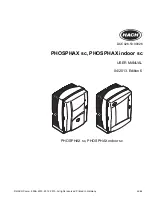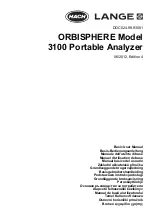
Clean with a slow and light touch moving in as broad a motion as possible either
left to right or up and down across the screen. Although the microfiber should
pose little to no risk to the screen, by avoiding cleaning in small circular motions
you avoid the risk of creating buffed out spots or spiral marks on the surface of
the screen. Light pressure and wide movements are the safest. While microfiber
is usually quite good at lifting up the dust and oil on its own, if you need some
extra cleaning power feel free to slightly dampen the cloth with
distilled
water
(avoid tap water as it can leave mineral deposits and film on the screen). The
cloth should be damp enough that it feels wet to the touch but not so damp that
any water could be wrung out of it. Remember: you don’t want a single drop of
water running down your screen and getting inside the bezel. If the screen is still
dirty, you may use a cleaning solution on the microfiber cloth. A mixture of 50%
distilled water and 50% white household vinegar is recommended or a
commercial cleaning solution specifically designed for cleaning an LCD touch
screen.
•
Never use household cleaners or anything that contains harsh chemicals
like ammonia, acetone, toluene, or ethyl alcohol. These chemicals can
damage the surface of the display.
•
Never use abrasive fabrics, including paper towels. They can leave micro
scratches on cleaned surfaces, which will build up over time, causing
dull screens.
•
Never spray or otherwise apply any solution directly to your display. It
could leak into the device and damage electronic parts.
Cleaning and Disinfecting Agents
According to the recommendations from the US Centers for Disease Control and
Prevention (CDC), audiometric equipment is considered to be non-critical
medical equipment and typically requires cleansing followed by low to
intermediate level disinfecting, depending on the nature of the contamination.
Cleaning should be done with a mild soapy detergent (such as dishwashing
liquid) and a damp cloth or an Endozime Sponge followed by an application of
EPA-registered hospital disinfectant. Do not use any abrasive cleaners.
Use of a non-alcohol based disinfectant is recommended for larger areas. Non-
alcohol based products contain the active ingredient referred to as quaternary
ammonia compound. Or you can use a hydrogen peroxide based cleaner such as
Oxivir Disinfectant Wipes to clean the probe, probe box, and to wipe down the
machine. The quaternary ammonia compound and hydrogen peroxide are
specifically designed to disinfect rubber, plastic, silicone and acrylic products
which are commonly used in hearing evaluation instruments.
LCD Touch Screen
It is safe to use a disinfecting wipe containing up to 0.5% hydrogen peroxide or a
commercial product that has been specifically formulated for LCD screens (i.e.
CareWipes Antibacterial Force Item #: 2XL-400). Gently wipe the screen
thoroughly, being careful to ensure no liquid drips in to the bezel. After
disinfecting, allow the screen to dry completely prior to next use.
Содержание TYMPSTAR PRO
Страница 2: ...D 0105594 Rev G i...
Страница 7: ......
Страница 27: ...GSI Part number Return to authorized representative special disposal required Manufacturer...
Страница 98: ......
















































